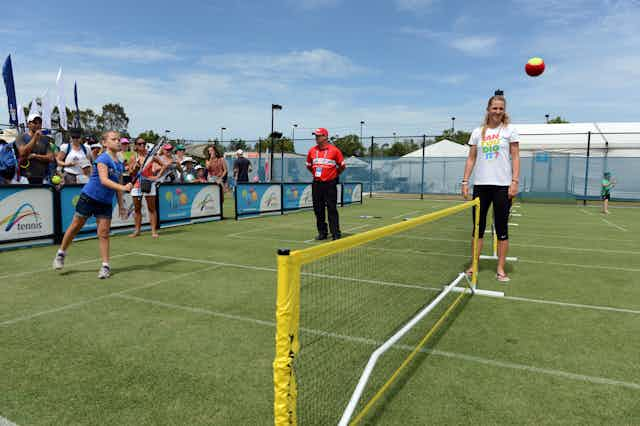Whether you’re a tennis fan or not, it’s impossible not to admire the sublime skills on display at the Australian Open. From Roger Federer’s brilliant backhand to Serena William’s sensational serve, we continue to be presented with a package of highlights that excite and entertain.
And while we marvel at the skills on display, few really understand how these talented players attain such a level of expertise. One thing we do know is that they all start at a very young age.
If you’re attending the Australian Open this week, take a short wander to the newly developed clay courts at Melbourne Park to see the best nine- and ten-year-olds in the country do battle. It is an initiative by Tennis Australia aimed at shining a light on our up and coming youngsters.
In recent years, the approach to develop young players into champions has changed.
In 2012, the International Tennis Federation (ITF) made only the fifth change to the game’s rulebook in over a century. The rule change mandated that low-compression (and therefore low-bounce) balls be used in authorised age-ten-and-under competitions held by the ITF’s member associations.
Australia has embraced this decision and now endorses the use of such balls for all children aged ten and under.
Research has subsequently shown that the use of lower-compression balls is advantageous to children’s match play.
A recent study by Tennis Australia (yet to be published) required the most skilled U10s in the country to play matches with standard balls and low-compression balls.
Analysis of the matches showed that the low-compression balls produced faster rallies and more points played at the net. Children also struck the lower-bouncing ball at a good height (between their thighs and shoulders), as opposed to the standard ball which often bounced too high.
Ultimately, the matches played with low-compression balls featured similar tactics and speed of play as those seen in matches between professional adults.
The use of modified equipment is also a key component of Tennis Australia’s junior development and participation program - Hot Shots. This program is very similar to the AFL’s Auskick and Cricket Australia’s Milo in2 Cricket programs in the sense that all three are based on scaling the game down to allow children to play with greater ease.
In a series of experiments that I conducted as part of my PhD (yet to be published), it was clear that scaling equipment to the physical size of the child improved performance (as we expected). This involved playing with smaller racquets, lower compression balls and on smaller courts.
But most interesting was the fact that scaling equipment appeared to encourage an implicit mode of learning. That is, children would learn the basic skills without consciously being aware of the technical aspects of the skill.
This style of learning is considered beneficial to motor skill learning as it promotes resilience to psychological and physiological pressures – both key elements of sporting success.
When you combine the Hot Shots initiative with the programs targeted at the best U10s and the new multi-million dollar academy at Melbourne Park, it would appear Tennis Australia is doing a lot to help foster and nurture young talent in this country.
Who knows, we might even see a young Aussie playing on the final Saturday or Sunday of the Australian Open in the not-too-distant future.

